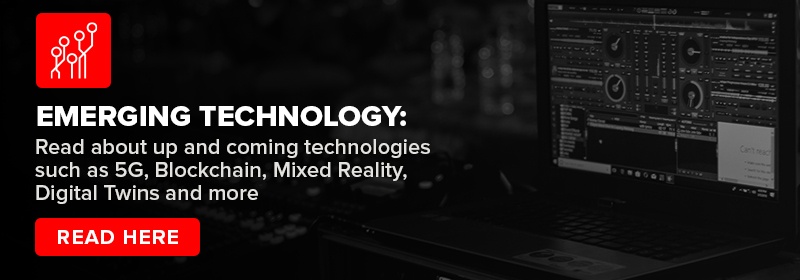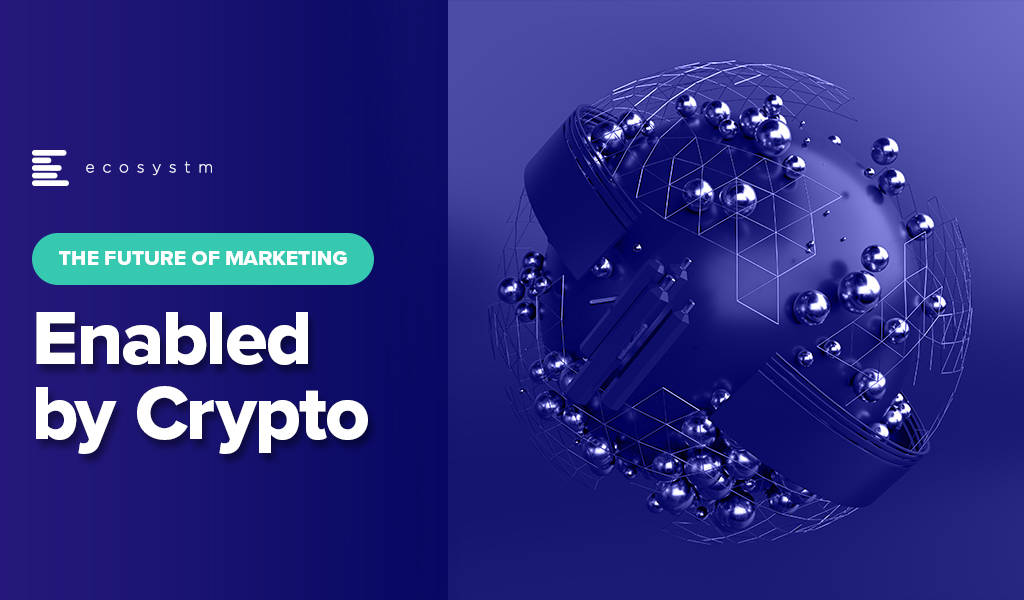Innovation and collaboration are the cornerstones of FinTech success stories. Successful FinTechs have identified market gaps and designed innovative solutions to address these gaps. They have also built an ecosystem of partners – such as other FinTechs, large corporates and financial services organisations – to deliver better customer experiences, create process efficiencies and make compliance easier.
As FinTechs have become mainstream over the years the innovations and the collaborations continue to make technology and business headlines.
Here are some recent trends:
- The Growth of Cross-border Finance. Globalisation and the rise of eCommerce have created a truly global marketplace – and financial agencies such as the MAS and those in the EU are responding to the need.
- Transparency through Smart Contracts. As businesses and platforms scale applications and capabilities through global partnerships, there is a need for trusted, transparent transactions. Symbiont‘s partnership with Swift and BNB Chain‘s tie-up with Google Cloud are some recent examples.
- Evolution of Digital Payments. Digital payments have come a long way from the early days of online banking services and is now set to move beyond digital wallets such as the Open Finance Association and EU initiatives to interlink domestic CBDCs.
- Banks Continue to Innovate. They are responding to market demands and focus on providing their customers with easy, secure, and enhanced experiences. NAB is working on digital identity to reduce fraud, while Standard Chartered Bank is collaborating with Bukalapak to introduce new digital services.
- The Emergence of Embedded Finance. In the future, we will see more instances of embedded financial services within consumer products and services that allows seamless financial transactions throughout customer journeys. LG Electronics‘ new NFT offering is a clear instance.
Read below to find out more.
Download The Future of Finance: FinTech Innovations & Collaborations as a PDF

The fundamentals of Web 3.0 are deeply rooted in technology that is ever-changing and continuously evolving. Web 3.0, powered by blockchains and crypto, is the Internet’s biggest technological upgrade since it became mainstream in the 1980s.
What is Web 3.0 and Why Does it Matter?
Web 1.0 (1990-early 2000s) – READ. The early Internet was characterised by an open-source protocol like HTTP, where the value accrued to the users and builders. In this era, technology companies such as Google, Yahoo and Amazon made their mark by layering on services such as search, directory listings and media publishing over an open-source infrastructure, essentially creating an online version of the offline world. The core contributors to digital media were mainly journalists, writers and reporters who reproduced pieces of their print content in a digital format. There was very little censorship during this period and the information was available mainly as databases.
Web 2.0 (early 2000-today) – READ & WRITE. This phase witnessed a wave of tech advancement, upgrades to servers, faster Internet speeds, development of complex APIs, algorithms and code to create peer-to-peer opportunities, user-generated content and social networking. Services such as Facebook and Twitter began monetisation of the increased user base through digital advertising. The years 2007-2012 saw a mobile revolution with Apple providing users with their first iPhone in 2007 and opened doors to third-party apps and builders. Facebook’s mobile pivot in 2012 amplified user social connectivity tremendously.
The tech architecture for Web 2.0 is built on a client-server protocol, where users are the clients, contributing content and the companies control the servers. The core functionality of the early Internet which was open for anyone to use and build on, has now transformed where the authority rests in the hands of the few. The rise of the creator economy is dependent on the frameworks developed by centralised companies. Software and hardware upgrades and renunciation of data and privacy rights by users to platforms have further accelerated centralisation of power. The Web 2.0 ecosystem now has a monopolistic culture where the companies decide who can participate, in what capacity, and how much value to share with stakeholders. Consumers do not have any ownership of their data or control over how it gets used; while creators give up rights to their content and do not have the ability to export their fanbase out from the platforms they have used, to interact with their communities. There is no incentive alignment between corporations and networks, and the users have no say in the platforms’ economics and governance. Web 2.0 is an Internet era built on ‘rented land’ where users don’t own anything.
Web 3.0 (2020 onwards) – READ, WRITE and OWN. Web 3.0 is a new computing platform, a paradigm shift towards a more democratised Internet, which is owned by the users and builders who create and transfer value in a trustless and decentralised way, facilitated through tokens. It is re-engineering the Internet’s open protocol and leveraging its architecture to benefit people rather than corporations.
The Core Components of Web 3.0
In order to understand the importance of Web 3.0 as technological innovation, it is essential to learn about its core components – tokens and blockchains.
Tokens are pieces of code that are used to transact over a blockchain and provide a record of digital ownership. They can be fungible and non-fungible. Fungible tokens are interchangeable (fiat currency, cryptocurrencies like Bitcoin). Non-Fungible tokens are unique, i.e no two tokens are alike (such as pieces of art).
The genesis of the blockchain architecture was developed by a pseudonymous individual named Satoshi Nakamoto in 2009, who developed a peer-to-peer electronic cash system called Bitcoin (the blockchain), that uses its native token (BTC) to transact over its network. Blockchain is a decentralised distributed ledger system, where transactions are executed and recorded in a series of immutable blocks on an interconnected network of nodes (computers).
Blockchains can be imagined as supercomputers that process thousands of transactions in exchange for incentives or tokens that accrue to miners and validators as rewards. Tokens are a new digital asset class that is increasingly seen as a store of value (Bitcoin), means of exchange (Ethereum, Solana and alternative cryptocurrencies), social currency (Rally.io) and several other use cases that offer utility and monetisation abilities to creators, entertainers and artists.
Future Value Drivers
Since 2020, we have seen the growth of cryptocurrencies and blockchain adoption by institutions and retail investors due to the decoupling of crypto into various value drivers like Decentralised Finance (DeFi), Non Fungible Tokens (NFTs) and Decentralised Autonomous Organisations (DAOs).
DeFi. DeFi refers to a financial system that runs on blockchain technology, and uses smart contracts that replace the need for traditional financial (TradFi) businesses to act as intermediaries. Core functions such as lending, borrowing. and transacting takes place seamlessly without the need for banks to execute the transactions. DeFi runs on code, a set of rules that are predefined on smart contracts. Users of the decentralised protocol own the network and participate in the rewards through token distribution. Tokens are distributed as incentives to users who are contributors to the network. There are strong differences between DeFi and TradiFi on trust, transparency, identity and access.
NFTs. NFTs are a record of ownership of digital assets on a blockchain. Technological advancements to the Bitcoin Blockchain genesis architecture and the introduction of smart contracts to blockchains such as Ethereum enabled a new use case of tradeable programmable tokens to emerge in the crypto landscape.
NFTs have been transformational to digital asset ownership and saw exponential growth in user adoption in 2020. A key milestone event in the history of NFTs is the USD 69 million sale of ‘Everydays: the first 5000 days’, by digital artist Beeple at an art auction organised by Christie’s in March 2020. Transaction volumes have now surpassed nearly USD 13 billion.
NFT represents anything digital that’s unique (non-fungible), has value, can be traded and its ownership secured on a blockchain. NFTs most commonly represent digital art, but they can be digital wearables, in-game virtual objects, a contract deed attached to a property, a domain name, or even a piece of writing such as this insight! For the first time, it is possible to exchange value between two trustless individuals anywhere in the world without them needing to disclose their identities or establish any contact and have asset ownership transferred and recorded on a blockchain.
DAO. A DAO is a community that is created and managed by its members who band together to achieve a common objective. Web 3.0 has enabled a dynamic shift in behavioural economics which is drawing people to it. The shift can be described as triabism at times but has been fascinating. The ongoing pandemic made more people spend time online and in the Metaverse, connect with others and also create. That happy place is called a DAO, where humans meet to share, connect, and drive value in a digital world known as the Metaverse.
Here are some ways that a DAO differs from a corporate. Companies are governed by a hierarchical system whereas DAOs are run like cooperatives in a flat structure. Company management takes decisions whereas DAO members vote on proposals to take collective decisions. Companies hire talent that meets certain criteria whereas anyone can join a DAO if they hold the DAO tokens/NFT or get invited to join the community. Companies compensate their employees with salaries whereas DAOs reward contributors with tokens.
The Future of a Decentralised Economy
Web 3.0 is transforming the economics of the creative, media and entertainment industry by changing the dynamics of how value gets created and distributed. It is an Internet that works for stakeholders who own it and create value for themselves. The shift from Web 2.0 to Web 3.0 is taking place more rapidly than the previous evolution of the Internet. The power dynamics and value generation are fundamentally changing how we view the Internet.
Web 3.0 is inevitable!

In the last decade, blockchain technology and crypto have been laying the foundations for an alternative reality in which humans interact and organise themselves without the mediation of a third party. Cryptocurrencies are almost a USD 2 trillion asset today and billions of dollars are being traded globally without the need of a bank or intermediary, with transactions secured on blockchains. Non-fungible tokens (NFTs) – currently valued at over USD 500 million – fuelled the democratisation of the art world and provided a proof-of-concept that crypto enables wider communities to transact pseudonymously.
The discovery, storytelling, evangelism, transfer of ownership in exchange for monetary value, are taking place seamlessly in the decentralised world, without a single dollar being spent on advertising. There is no central owner or authority directing this phenomenon.
Read on to find out more about:
- How crypto is causing a Marketing revolution
- The ways corporates, consumers and content creators are leveraging it
- The growth in Decentralised Marketing (DeMar)
- The NFT use case for brands
- Brands in Web 3.0 today
Download The Future of Marketing: Enabled by Crypto as a PDF






















